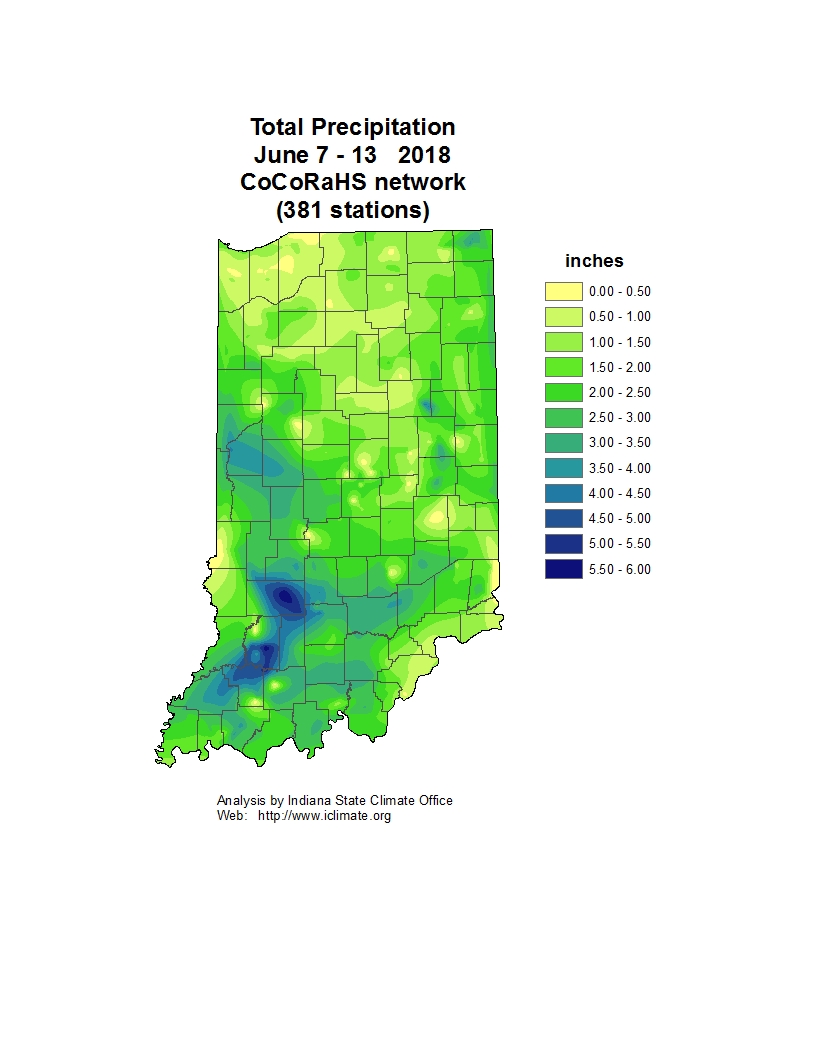
Average Temperature Departure from Mean June 19-25, 2018

Average Temperature Departure from Mean June 19-25, 2018

Total Precipitation June 21-27, 2018

Many people have commented that we have the best stands of corn and soybean across the state that we have seen in many years.

https://extension.entm.purdue.edu/newsletters/pestandcrop/wp-content/uploads/sites/2/2018/06/Figure-31.jpg

Pheromone trapping began for western bean cutworm moths this week. Within just one day several cooperators were reporting catches. This is just the beginning of an extended moth emergence and flight, with their peak activity expected 2-3 weeks from now.

Average Temperature Departure from Mean June 13-19, 2018
Irrigation scheduling by accounting for changes in available soil moisture provides information on the timing and amount of water to apply to meet crop needs.

Total Precipitation June 14-20, 2018

Total Precipitation June 7-13, 2018

Average Temperature Departure from Mean June 5-11, 2018
© 2024 Purdue University | An equal access/equal opportunity university | Copyright Complaints | Maintained by Pest&Crop newsletter
If you have trouble accessing this page because of a disability, please contact Pest&Crop newsletter at luck@purdue.edu.